Indigenous approach to agriculture could change our relationship to food. And help the land in the process.
ONEIDA — Everyone puts their own spin on braiding corn husks.
Toni House offered this wisdom the first day of October as she and a partner wove 65 ears of Tuscarora white corn into a hefty, impressive braid.
When finished, they held the braid high – prompting a cheer from those around them – and carried it into a nearby barn, where it will hang to dry until spring, when it will be used for mush, cornbread and corn soup.
First in this series: Great Lakes tribes’ knowledge of nature could be key to navigating climate change. Will enough people listen?
Third in the series: Tribes do their part to keep air clean. Now, they want to make sure pollution from afar doesn't put that at risk.
Fourth in the series: Great Lakes tribes teach 'water is life.’ But they’re forced to fight for a voice in safeguarding it.
House is a member of Ohe·láku, a co-op of Oneida Nation families that grow white corn on reservation land. What began as an experiment has blossomed into a robust organization; members even shared a stage with Willie Nelson in 2019 when Farm Aid came to Alpine Valley Music Theatre in East Troy.
The ritual of husking, braiding and hanging corn signifies more than just the start of harvest season.
It reflects the Indigenous approach to agriculture. It's community.
“That’s the medicine of it,” House said.
Many Wisconsin tribes have renewed an interest in farming as a way to reconnect with their cultural history, and regain ownership of their food supply. They hold deep respect for crops they grow, speak often about the relationship between humans and plants, and make decisions based on preserving a way of life for future generations.
What’s become apparent to both tribal leaders and an increasing number of outsiders is the gulf between how Indigenous people approach the land and the typical approach of American farming – maximizing yield, prioritizing profit, a “go big or get out” mentality, said Lea Zeise, who co-founded Ohe·láku in 2016.
It's unlikely that gulf will narrow significantly, at least not in the world of corporate agriculture. Farming is part of a global marketplace involving worldwide economic forces and massive crop volume.
But climate change is threatening to upend the world’s food system, and many consumers increasingly resist processed food laden with chemical additives, and want a closer relationship to what they eat. One prime example: The farm-to-table movement that has had such an influence on grocery stores and restaurants.
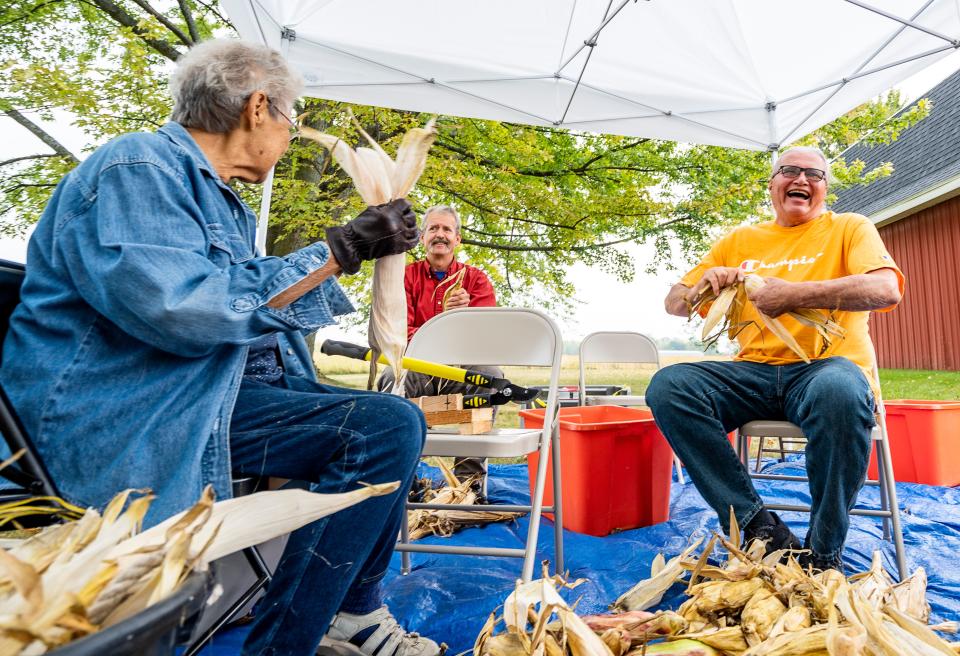
In that environment, Indigenous growers offer lessons from their connection to food, thoughtfulness about the land, and commitment to healing the natural world.
“What we’re saying is, ‘Let’s come together, let’s come back to the land … we don’t have to commodify everything,’” Zeise said. “We can do this, just putting our minds together and putting our bodies together on the field, and get it done.”
Food isn’t just a commodity for tribes
Sydney Colwell, who manages community gardening efforts for the Ho-Chunk Housing and Community Development Agency in Tomah, said she was taught as a child that her food had feelings.
“If we nurture it and take care of it, it’ll take care of us,” she said.
Unlike the norms of conventional agriculture, tribal farmers have a spiritual relationship with their crops.
Today, many tribes have a long-term goal of achieving food sovereignty, or the ability to control their agriculture and food supply systems, ensuring healthy and culturally appropriate food.
More: 'It works': State to extend funding for tribal food sovereignty program
That was a key reason the Forest County Potawatomi Community in northeast Wisconsin started its farm, Bodwéwadmi Ktëgan, near Laona in 2017, said farm manager Dave Cronauer. Today, they grow a variety of fruits and vegetables, including Potawatomi watermelon and pole beans; raise beef cattle and bison; and have an orchard and an aquaponics facility on site.
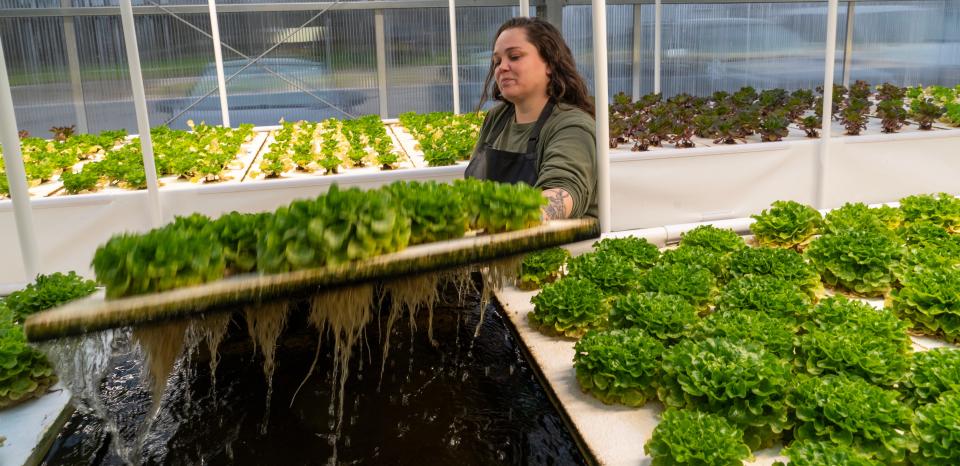
On Bodwéwadmi Ktëgan, tillage is reduced, grazing rotated, and pesticides avoided to benefit both the land and the people consuming the food, Cronauer said. That food is sold at a storefront, donated to tribal programs, and given to tribal elders and others in need.
Cronauer said his ultimate goal is to produce most everything his community needs.
That's beginning to happen with Ohe·láku members in Oneida as well. Having an abundance of corn has given them the ability to barter for maple syrup, wild rice, fish and bison that other tribal members have raised or produced, bringing back to life tribal trading practices. The corn is also the most asked-for product in the Tribal Elder Food Box program, which feeds Indigenous elders across Wisconsin, said Laura Manthe, a co-founder of the co-op.
Co-op members save the best corn and use its seeds to plant the following year, just like their ancestors did, so they don’t have to buy more.
Manthe sees a contrast with conventional farming, in which seeds are ordered and corn is picked by machine.
“Not one human hand ever touched it,” she said. “So what is the relationship between the human and the corn?”
Tribal growers seek long-term sustainability
Daniel Hayden, a doctoral student at the University of Wisconsin-Madison, has been working with the co-op on one of its fields since 2019, testing different cover crop mixes to restore the soil, which had been depleted under prior ownership. He has roots in the Comanche, Pawnee and Muscogee (Creek) nations and understands the co-op's relationship to the corn.
This year, Hayden planted a mix of winter wheat, clover and chicory in between the row crops, a process called interseeding. Cover crops like these are left on the field after the crop is harvested so the fields are never bare. They increase soil fertility, limit runoff and keep the soil moist.
Many farmers worry that planting cover crops could negatively impact yield, Hayden said. He’s hoping to provide data showing that’s not true.
He believes this year has been the most successful yet, and suspects the corn did well with cover crops because, historically, it was planted alongside beans and squash.
Oneida people used to rotate through their territory, living and growing in new areas to give the land they’d just grown on time to rest and recover, Zeise explained. Today, they can't pick up the reservation and move it, but they can rotate which fields they plant on and give the soils an extra boost to help them regenerate.
“It’s just taking some of that ancestral knowledge and thinking about it in a different way,” Zeise said.
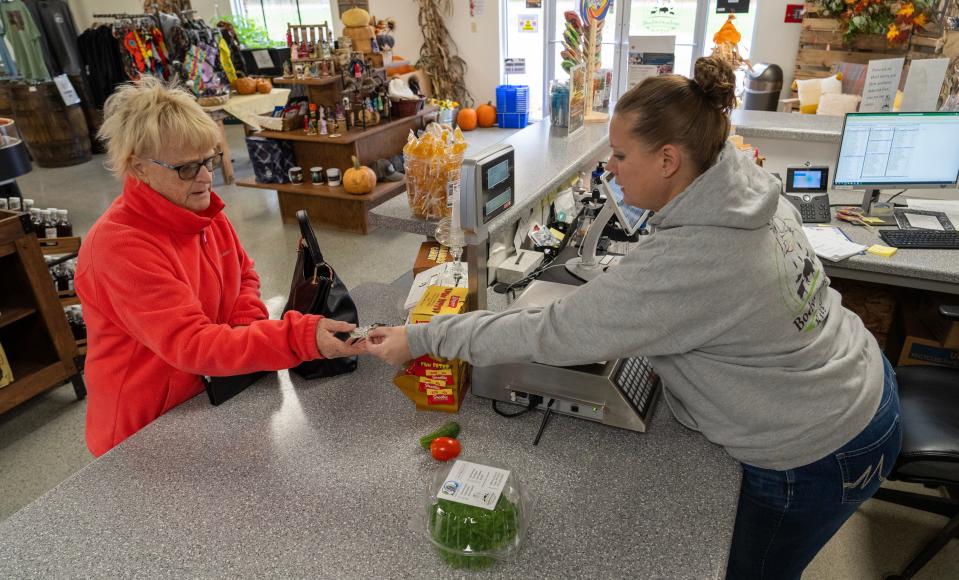
The passion for this type of work spans generations. Celina Hall, a member of the Ho-Chunk Nation who worked with the tribe’s agriculture division during an internship this past summer, hopes to help her tribe continue to make the connection between sustainable agriculture and traditional ecological knowledge. Hall, who is now a student at the University of Kansas, said reconnecting with the land provides a huge opportunity to strengthen the community.
“When you have a relationship to the land, you’re creating a better environment – not just for yourself, but for all our plant and animal relatives that live with us,” Hall said.
The better environment she speaks of isn’t just theoretical – it’s on display near Lake Michigan.
The Oneida Nation reservation sits within the lower Fox River watershed, which drains into Lake Michigan via the bay of Green Bay. The river is the largest contributor of phosphorus to the lake and second largest contributor of sediment, part of the reason why the river and the lower bay of Green Bay are one of the most degraded areas in the Great Lakes.
But now, the creeks on the reservation have met their goal of limiting phosphorus for the second year in a row, said Jim Snitgen, water resources supervisor for the Oneida Nation. And earlier this year, Snitgen and his team spotted evidence that brook trout were reproducing in Trout Creek for the first time in decades. Less pollution in the creeks, which flow into other, larger water bodies, will ultimately mean less pollution in Lake Michigan and a healthier habitat for fish and wildlife.
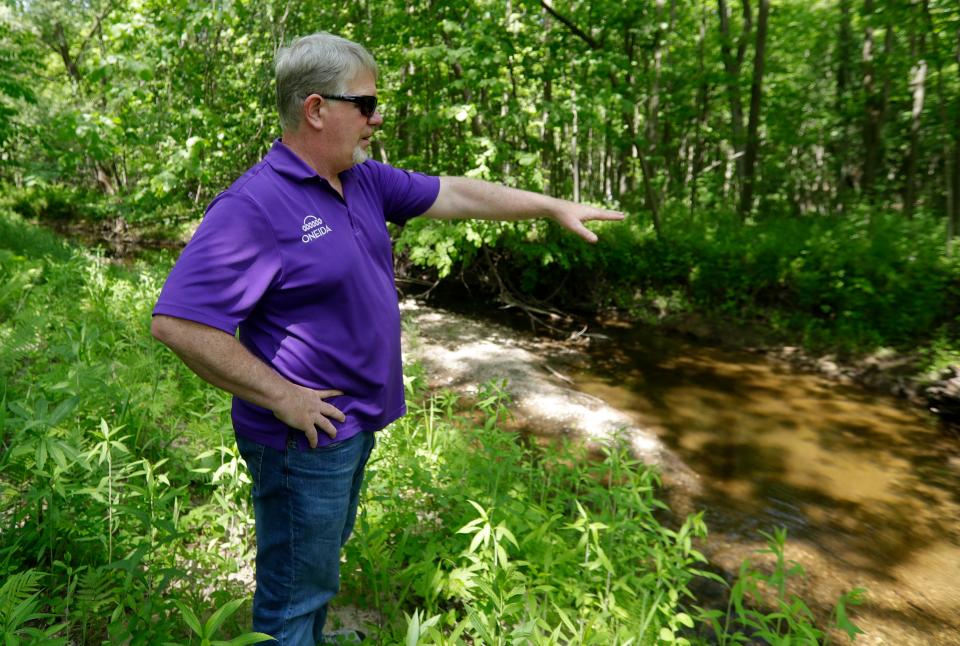
In addition, more than 400 acres of agricultural land on the reservation have been converted to native habitat since 2018. The restored lands provide habitat for pollinators and birds, and create space for tribal members to gather fruit, nuts and medicinal plants.
More: After decades of damage, Oneida Reservation projects 'repair the land to what it wanted to be'
The work is having a ripple effect with non-tribal farmers, Snitgen said. Three-fourths of Oneida’s leased-out agricultural land is rented to non-tribal members, but any farmer who leases land must adhere to tribal conservation practices.
Those farmers will see they can still make a profit, and hopefully extend the practices beyond the reservation, suggests Greg Baneck, conservationist with Outagamie County.
Systemic barriers disrupt relationship between tribes and their land
Today, there are about 80,000 producers across the country who identify as American Indian or Alaska Native, according to the U.S. Department of Agriculture’s 2017 agriculture census, the most recent available. That year, they contributed roughly $3.5 billion to the industry, a small share of the $389 billion in agricultural products produced across the U.S.
But Indigenous growers have faced discrimination from government agencies meant to provide assistance. In 2010, the USDA agreed to pay hundreds of millions of dollars to Native American farmers after they alleged that the agency was denying them loan opportunities given to white farmers. And even though they're getting those opportunities today, they're coming slower. A 2022 report by the Center for Public Integrity found that the Farm Service Agency was late delivering 33% of direct loans to Native Americans and Alaska Natives, more than double the percentage of loans to white farmers that were late.
Indigenous farmers continue to face obstacles because they are trying to pursue goals with long-term sustenance in mind within a system that’s designed for a different type of farming, Hayden said. They may not be taken seriously, he said – or they may struggle to find equipment that aligns with their needs and the smaller scale of their operations. USDA resources often are marketed toward commercial agricultural operations.
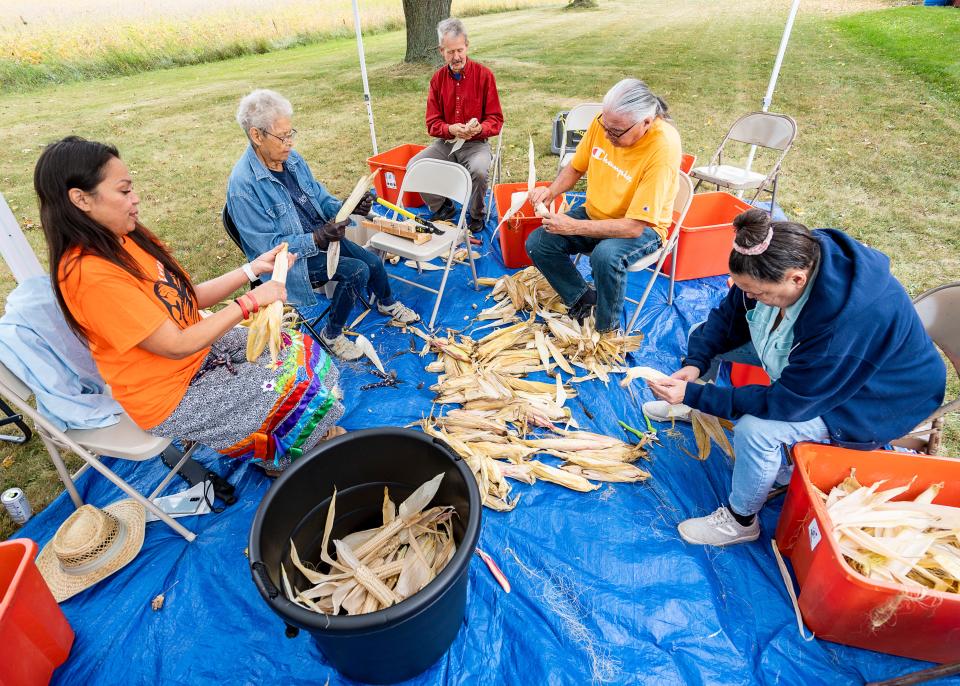
When the agency is designing conservation programs, Indigenous farmers should get to weigh in on whether those programs will work for them, Zeise said.
“We do have a different set of rules when it comes to land … we have different interests, different priorities, different approaches to conservation,” she said. “If the program isn’t written for us, then we’re not going to be able to utilize it.”
Chris Borden, who’s currently serving as acting national tribal liaison for the USDA’s Natural Resources Conservation Service and is based in Wisconsin, acknowledged this is one area where his agency needs to better meet the needs of Indigenous growers.
More: Potawatomi encouraging members to eat more traditionally for better health
The agency's financial incentives for conservation practices are structured for its typical clientele, he explained – corn, soy or dairy producers with vast acreage.
Although the agency hasn’t necessarily turned down tribal producers wanting to participate in programs, “our incentives haven’t been meaningful enough (for them) to engage with us,” Borden said. “We need to get to a better place on that.”
In other places, though, progress is being made. Tribal knowledge of issues like wild rice restoration and walleye raising have informed the programs and practices the agency has developed, Borden said. And there’ll be more to come – like developing a financial incentive for farmers who plant corn, beans and squash together or use other Indigenous growing techniques.
Tribal agriculture advocates are also pushing to have their knowledge and priorities recognized in federal farming legislation. In 2018, 63 tribal provisions were included in the Farm Bill, which governs programs and spending for the USDA. That made it the most inclusive Farm Bill to date, according to the Native Farm Bill Coalition.
The coalition has developed a slate of priorities for the 2023 Farm Bill as well, including enhancing Conservation Service programs for tribal producers and funding more research on the role traditional knowledge plays in natural resources, nutrition and health.
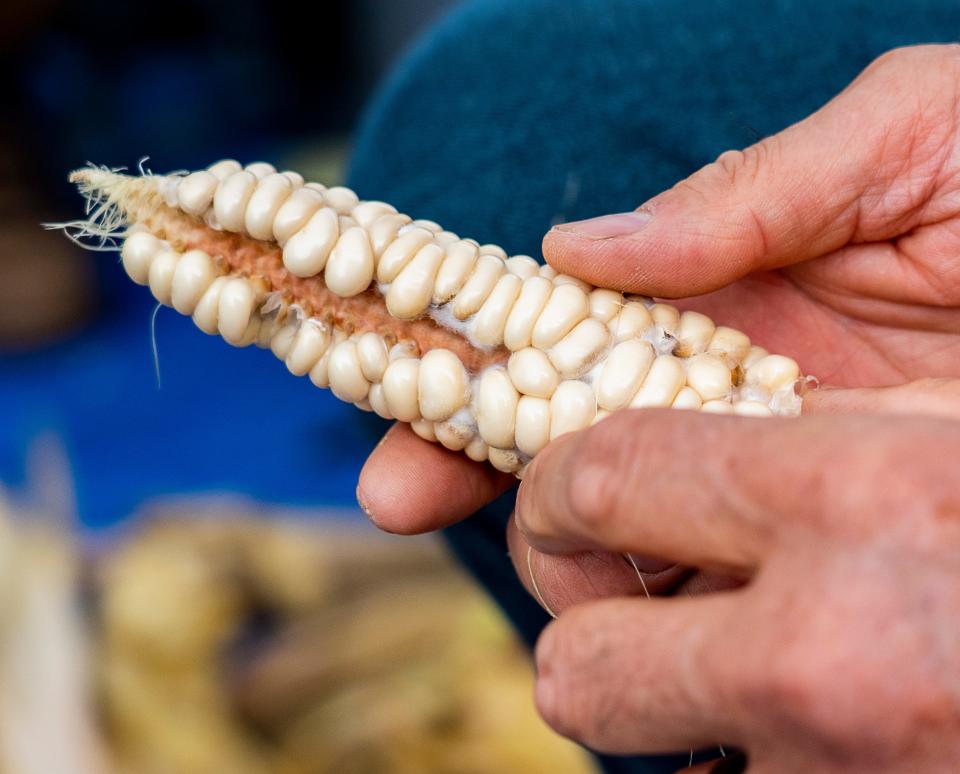
Traditional knowledge provides the path for future generations
Still, the same threat that is looming over agriculture worldwide is facing Indigenous growers: climate change. Lois Stevens, an assistant professor of First Nations Studies at the University of Wisconsin-Green Bay and a member of the Oneida Nation, said increasing weather extremes mean it’s getting harder to predict what each growing season will be like.
But sometimes, things work out better than expected. Despite the past summer being one of the driest on record for Wisconsin, the Ohe·láku corn crop grew tall and strong. Manthe, the co-op co-founder, credited the plant's historical adaptability, having existed through a multitude of weather situations over thousands of years.
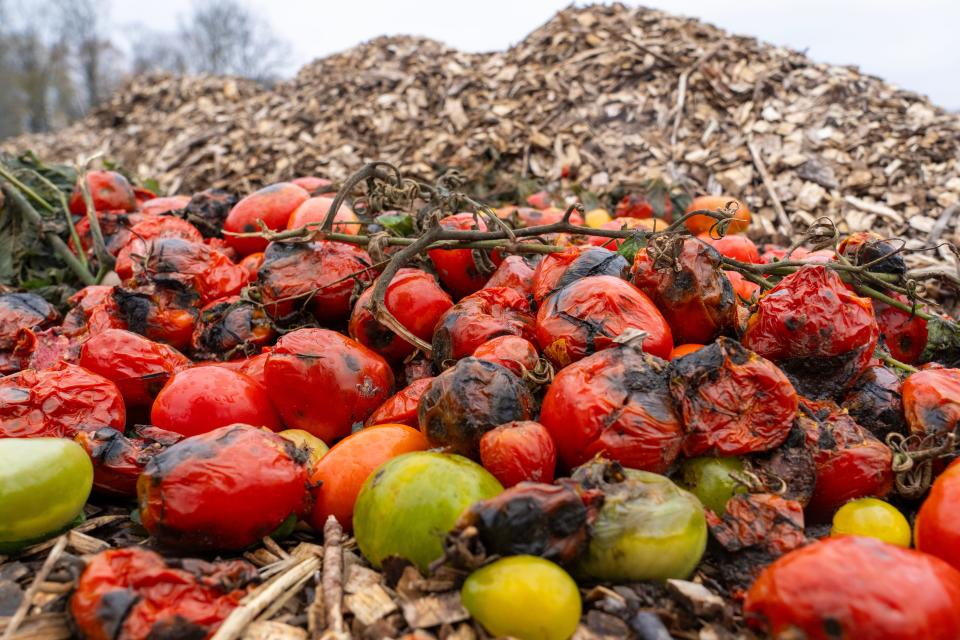
“Our corn knows what to do,” Manthe said.
Climate change was one of the first discussions when the co-op was forming, she said. It increased the urgency of their work.
American culture tends to focus on individuality and what a person can achieve in one lifetime, Zeise said. The Indigenous focus is on what can be achieved for the next lifetime, and the next.
“I think food has unique potential to heal a lot of damage in our lives,” Zeise said. “Healing the land and the water, the people … our economy, ensuring our culture persists into the next generation.”
“I could not think of something that would be more powerful than that.”
The project
This four-part series examines how Indigenous communities in Wisconsin are pushing to protect land, air and water. It is supported by a climate change reporting grant from the Poynter Institute, through funding by the Joyce Foundation. All content was produced by the Journal Sentinel staff under the guidance of its editors.
The reporters
Caitlin Looby has covered the Great Lakes Basin for the Journal Sentinel since June 2022 through Report for America. She has a doctorate in ecology and evolutionary biology, and has been a science researcher, teacher and writer.
Madeline Heim has covered the Mississippi River basin for the Journal Sentinel since May 2022 through Report for America. She has been a health and science writer, and was the lead Gannett Wisconsin reporter on the COVID outbreak.
Frank Vaisvilas has covered Indigenous issues for Gannett Wisconsin since June 2020, and based at the Journal Sentinel since June 2023. Vaisvilas’ roots on his mother’s side are Yaqui, the Indigenous people of Arizona and Sonora, Mexico.
This article originally appeared on Milwaukee Journal Sentinel: Tribal approach to food could change relationship to land in Wisconsin

